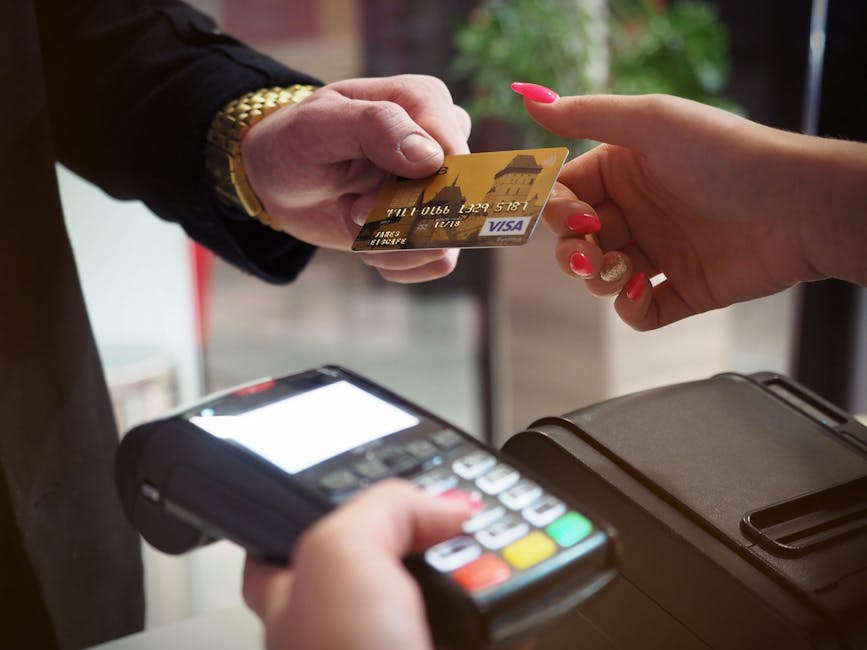Credit Card Debt Mastery: 9 Smart Tactics for Rapid Payoff and Management in 2025
Credit card debt can feel overwhelming, trapping many Americans in a cycle of high-interest payments that hinder financial progress. With average balances exceeding $6,000 per household, it’s crucial to act swiftly to regain control. This guide outlines a comprehensive plan to pay off credit card debt fast while implementing smart management strategies. By following these steps, you can reduce stress, improve your credit score, and pave the way for a debt-free future.
Table of Contents
Understanding the Impact of Credit Card Debt
Credit card debt accumulates quickly due to high annual percentage rates, often ranging from 15% to 25%. This interest compounds daily, turning small purchases into significant burdens over time. Many people underestimate how credit card debt affects their overall financial health, leading to reduced savings and limited investment opportunities.
According to financial experts, unchecked credit card debt can lower your credit score, making it harder to qualify for loans or favorable rates. It’s not just about the money; the emotional toll of constant worry can impact mental well-being. Recognizing these effects is the first step toward effective management.
In 2025, with economic uncertainties, addressing credit card debt promptly is more important than ever. Inflation and rising costs amplify the urgency, pushing households to seek reliable payoff plans. By understanding these dynamics, you position yourself for smarter financial decisions.
Why Credit Card Debt Grows So Fast
The mechanics of credit card interest are designed to favor issuers. Minimum payments often cover only interest, leaving the principal untouched. This creates a snowball effect where debt multiplies without aggressive intervention.
Fees for late payments or exceeding limits add to the pile, sometimes as much as $40 per incident. Without a plan, what starts as a $1,000 balance can double in a few years. Awareness of these pitfalls empowers you to break the cycle.

Assessing Your Current Debt Situation
Before diving into a payoff plan, take stock of your credit card debt. List all cards, balances, interest rates, and minimum payments. This inventory reveals the total owed and identifies high-priority debts.
Use free tools like annualcreditreport.com to pull your credit reports. Check for errors that might inflate your debt picture. Accurate assessment forms the foundation of your management strategy.
Calculate your debt-to-income ratio by dividing monthly debt payments by gross income. A ratio over 36% signals trouble and may require lifestyle adjustments. This step ensures your plan is realistic and targeted.
Tools for Tracking Credit Card Debt
Apps like Mint or YNAB simplify monitoring. They categorize spending and alert you to due dates, preventing additional fees. Integrating these tools into your routine streamlines the process of paying off credit card debt.
Consider consulting a nonprofit credit counselor for an objective review. They can spot overlooked issues and suggest tailored approaches. Early assessment prevents small problems from escalating.
Once assessed, prioritize debts using methods like the debt avalanche, targeting highest interest first. This saves money long-term compared to random payments. Your evaluation sets the stage for efficient repayment.
Crafting a Budget Tailored for Debt Repayment
A solid budget is essential for managing and paying off credit card debt quickly. Start by tracking income and expenses for a month to identify leaks. Allocate at least 20% of income toward debt reduction beyond minimums.
Cut non-essentials like dining out or subscriptions. Redirect those funds to your credit card balances. The goal is to create a surplus dedicated solely to debt payoff.
Incorporate the 50/30/20 rule: 50% needs, 30% wants, 20% savings and debt. Adjust as needed for aggressive credit card debt repayment. This framework balances life while advancing your goals.
Building an Emergency Fund Alongside Debt Payoff
While focusing on credit card debt, don’t neglect an emergency fund. Aim for $1,000 initially to cover surprises without new charges. This prevents relapse into debt cycles.
Automate transfers to a high-yield savings account post-paycheck. Even small amounts compound over time. Balancing fund building with debt management ensures sustainable progress. For more on this, check our guide on Emergency Fund 2025: 7 Essential Steps to Build Financial Security.
Review your budget monthly, tweaking for changes in income or expenses. Flexibility keeps you on track toward a debt-free life. Consistent budgeting transforms overwhelming credit card debt into manageable tasks.
Accelerated Payoff Strategies for Credit Card Debt
To pay off credit card debt fast, explore balance transfers to 0% APR cards. These offers provide 12-21 months interest-free, ideal for chipping away at principal. Compare fees to ensure savings outweigh costs.
Implement the debt snowball method: pay minimums on all cards, extra on the smallest balance. Psychological wins from quick victories motivate continued effort. Alternatively, debt avalanche prioritizes high-interest debts for financial efficiency.
Boost income with side hustles like freelancing or ridesharing. Direct earnings straight to credit card debt. Our article on 10 Essential Side Hustles to Pay Off Debt Faster in 2025 offers practical ideas to accelerate your payoff.
Negotiating Lower Rates and Consolidating Debt
Contact issuers to request lower APRs, especially with good payment history. Many reduce rates by 2-5% for loyal customers. Persistence pays off in reduced interest expenses.
Consider debt consolidation loans for lower overall rates. This simplifies payments into one monthly amount. For deeper insights, read How to Pay Off Credit Card Debt Fast: 7 Proven Strategies.
Avoid new charges by using cash or debit for purchases. Track progress with payoff calculators to stay motivated. These tactics can shave months or years off your credit card debt timeline.

Incorporate windfalls like tax refunds directly into payments. Even partial extra payments reduce interest accrual. Combining strategies maximizes speed in conquering credit card debt.
Leveraging Rewards and Bonuses Wisely
If you have rewards cards, redeem points for statement credits toward debt. Avoid new spending that adds to balances. This clever use turns perks into payoff tools.
Sign-up bonuses from new cards can provide cash back applied to debt, but only if managed carefully. Focus on no-fee options to minimize risks. Strategic use enhances your management plan.
Throughout 2025, monitor for promotional offers that align with your goals. Adapt as rates change, ensuring your approach remains optimal. These steps build momentum toward freedom.
Ongoing Management and Prevention Tips
After paying off credit card debt, maintain vigilance to avoid recurrence. Set spending limits below your credit utilization threshold of 30%. Regular checks keep scores healthy.
Build habits like paying balances in full monthly. Educate yourself on financial literacy through resources like the Consumer Financial Protection Bureau. This authority offers free guides on responsible card use.
Review statements monthly for unauthorized charges. Dispute errors promptly to protect your progress. Proactive management solidifies your debt-free status.
Rebuilding Credit Post-Payoff
Keep accounts open to preserve credit age, a key score factor. Use cards sparingly for small purchases, paying off immediately. This demonstrates responsibility without risk.
Monitor progress with free credit score services. Aim for improvements that unlock better opportunities. For tactics, see our post on Credit Score Mastery: 6 Proven Tactics to Elevate Your Financial Standing in 2025.
Consider secured cards if scores need a boost. They build history safely. Long-term, diversify credit mix while keeping debt low.

Integrate saving and investing once debt is cleared. Compare options in Saving vs Investing in 2025 — Which Gives Better Returns? (Complete Guide). This shift grows wealth sustainably.
Sustaining Financial Health in 2025
Adopt frugal living practices to stretch income further. Track net worth quarterly to measure success. Celebrating milestones reinforces positive behaviors.
Seek community support through forums or apps for accountability. Share your journey to inspire others. In uncertain times, a robust plan ensures resilience against future credit card debt.
Ultimately, mastering credit card debt requires discipline and knowledge. Implement this plan step-by-step for rapid results. Your path to financial independence starts today, leading to greater peace and opportunity.




